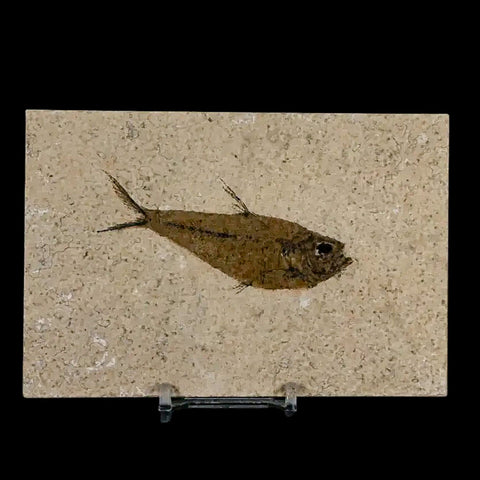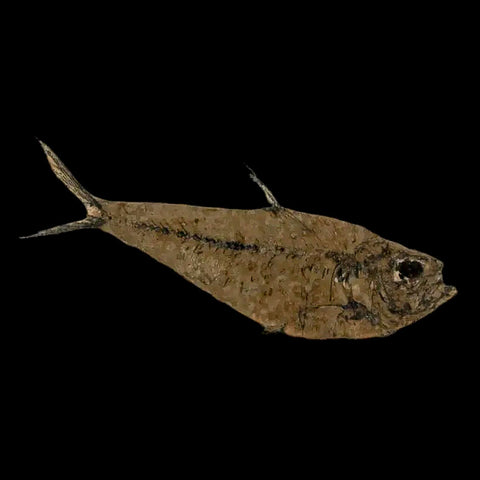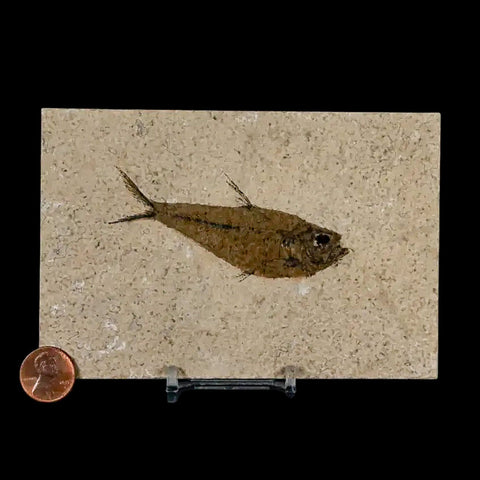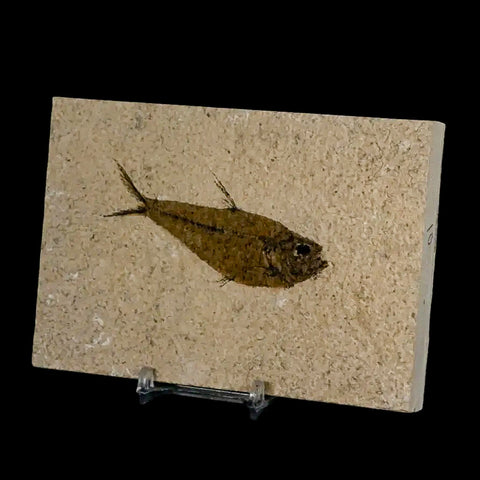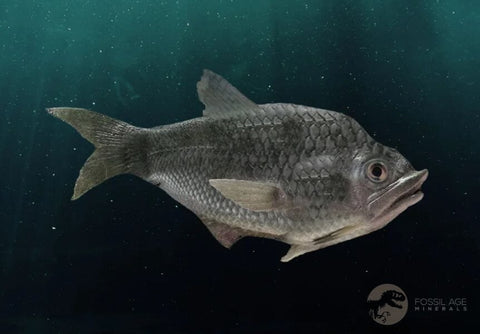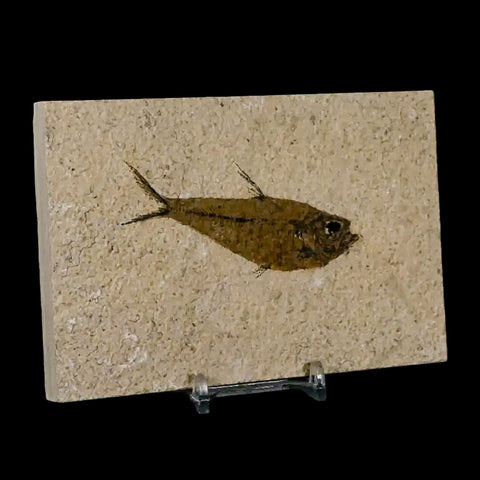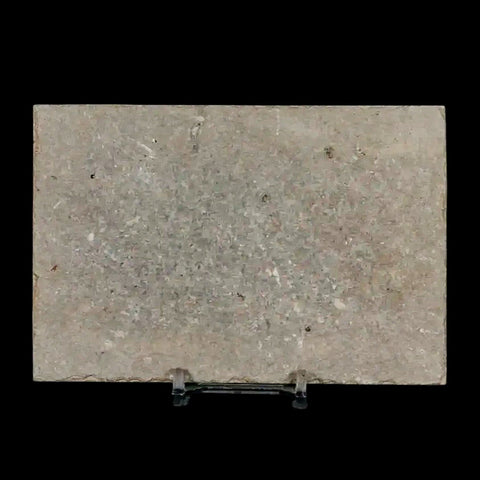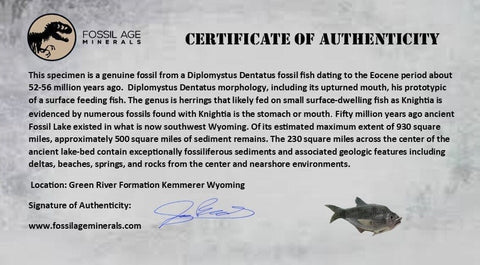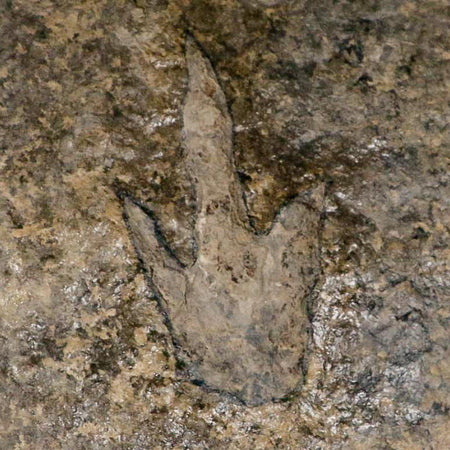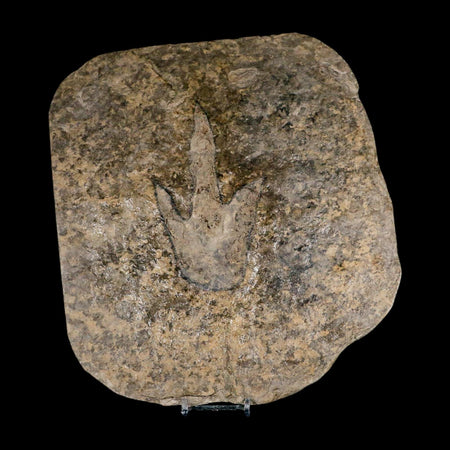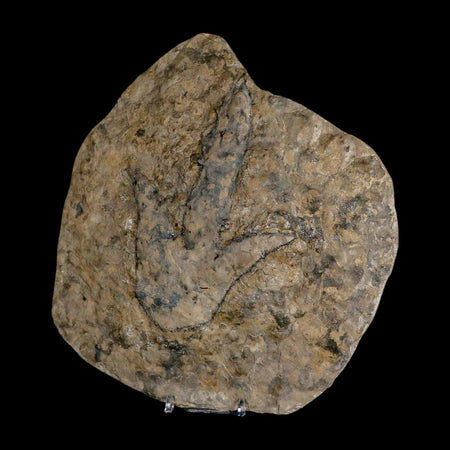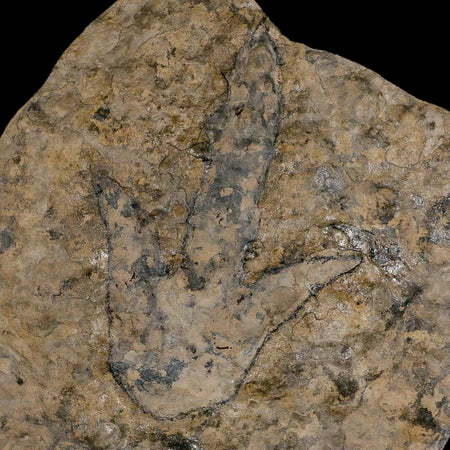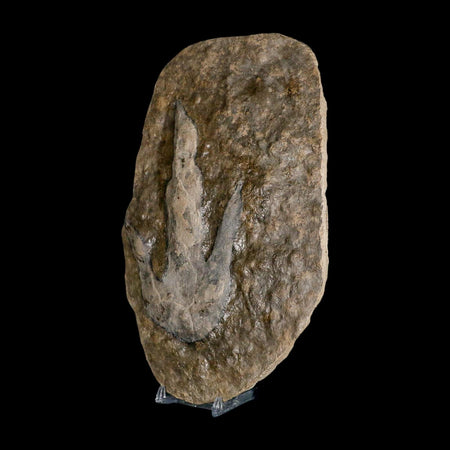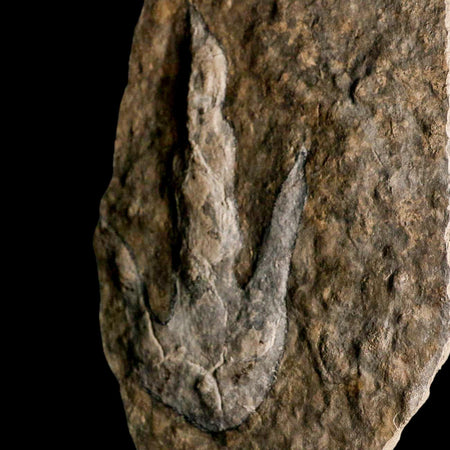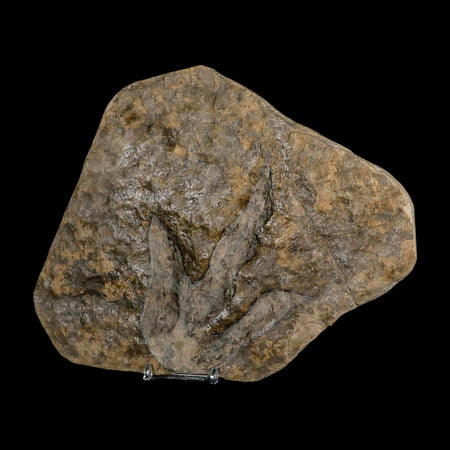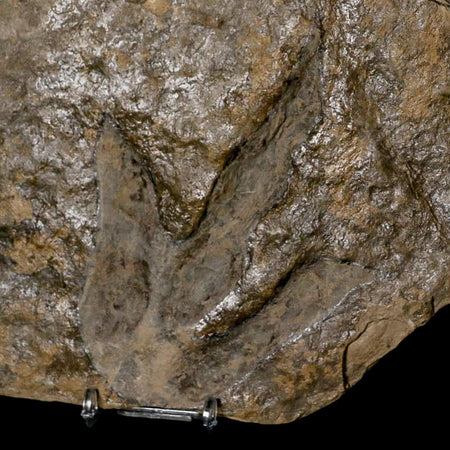3.3" Diplomystus Dentatus Fossil Fish Green River FM WY Eocene Age COA, Stand
Location: Kemmerer, Wyoming
Weight: 12.2 Ounces
Dimensions: 5.3 Inches Long, 3.6 Inches Wide, 0.5 Inches Thick (Plate)
Fish Dimensions: 3.3 Inches Long, 1.4 Inches Wide
Comes with a Free Stand.
Comes with a Certificate of Authenticity.
The item pictured is the one you will receive.
56 million years old, Eocene age.
Diplomystus Dentatus exhibits an upturned mouth, a feature common among surface-feeding fish. This genus of herrings likely hunted small fish living near the water’s surface, as many fossils show Knightia remains within their stomachs or mouths. Around 50 million years ago, Fossil Lake covered what is today southwest Wyoming. Originally spanning about 930 square miles, roughly 500 square miles of sediment remain. The central 230 square miles of this ancient lake bed contain highly fossil-rich sediments and diverse geological features like deltas, beaches, and springs. The lake’s unique chemistry inhibited decay and scavenging, allowing thin limestone layers to accumulate. These laminated limestones preserve the world’s highest concentration of fossil fish, making Fossil Lake an unparalleled record of a Paleogene freshwater lake ecosystem.
Since the discovery in the 1870s, many perfectly preserved fossil fish have been recovered. Preserved with the fish in the laminated limestone is a complete aquatic ecosystem: cyanobacteria, plants, insects, crustaceans (shrimp, crawfish, and ostracods), amphibians (frog and primitive salamander), alligators, turtles, birds, and mammals, including the oldest pantolestid (otter-like animal). The subtropical terrestrial ecosystem surrounding the lake is also represented by rare fossils, including a horse, two snakes, lizards, two bat species, birds, an apatemyid (an arboreal insectivore), a minced (a primitive carnivore), insects, and more than 325 types of leaves, seeds, and flowers.

Please be aware of the nature of fossils:
Being buried under the ground for millions of years under tons of pressure tends to be rough. No fossil comes out of the ground whole and perfect. Most fossils have undergone some restoration, while others are altered by man, simply to enhance their presentation in different ways. These are part of the natural beauty of the fossil and are not considered defects.


